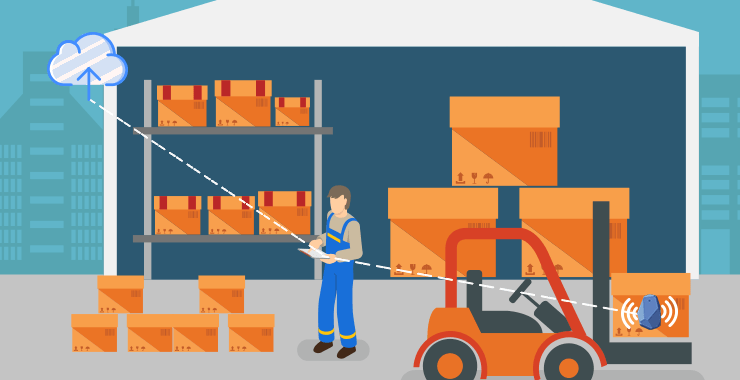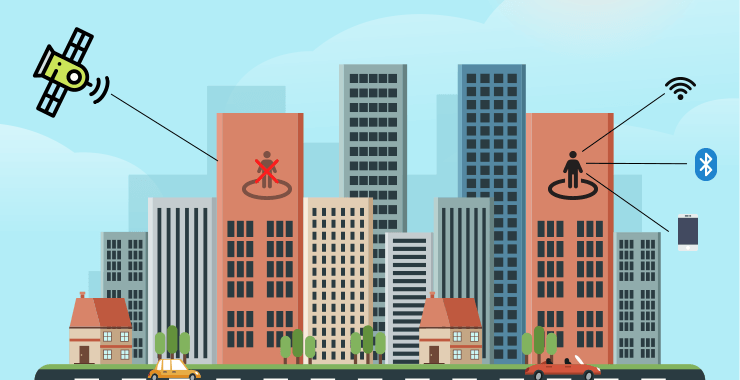Why Bluetooth Low Energy (BLE) is the Holy Grail of Asset Tracking?
- by BLE Mobile Apps

Automated asset tracking is the basis of modern logistics management systems. The assorted endpoints feeding the movement of various assets from origin to destination to logistics management systems come in various sizes and shapes, but none hold the distinction of being fully automated.
There are all sort of technologies to capture asset tracking data but none is fit for every purpose. While GPS is synonymous to any fleet management system, the positioning technology is conspicuous by its absence in inventory management systems widespread inside fulfillment centers. Indoor spaces render GPS inoperable. If asset tracking inside your warehouse means a bunch of warehouse personnel have to manually scan each item with a barcode reader as it enters and exits the warehouse, I won’t call it an efficient warehouse operation.

Alternatively, if the sophisticated, active multiple RFID readers installed at the entry and exit points of your warehouse scan each item and report it to the inventory management system part of the larger logistics management system, are they worth the investment when you’re investing upwards $4000 on each reader.
Real-time Asset Tracking
Indeed, establishing ecosystem to enable a real-time asset tracking system is a costly affair from setup to maintenance but short selling on technology isn’t the smartest buy. For example, BLE as a tracking technology is not only approachable but affordable and that includes setup. Maintenance is bonkers when a single BLE device can run months even years on a single pair of batteries. BLE readers are widespread as every modern smartphone is equipped with BLE radios and with the right app, they can turn into fantastic BLE readers.
![]()
Amazon is full of BLE tags that cost less than two dollars. A simplest BLE tag can be a sticker you can stick to your wallet, which you can ping to locate, the same way you can miss call your smartphone when it is under piles of laundry or with 3YO Daniel.
Asset Tracking in Logistics Management
A typical fulfillment center sources supply from suppliers and manufacturers to fulfill demand. Supplies from manufacturers are generally inside pellets and cartons, which they tag along as asset. Therefore, each asset passes to a nearby warehouse and then a fulfillment center nearest to the customer or distributor from where it moves to the end user or a reseller. Assets in logistics change their form down the supply chain. So what started as large shipping containers undocking at a major port may become a little boxes when they reach the customer.
The job of an asset tracking feeding a logistics management system is to perform end-to-end tracking on assets. Every item has a unique code a reader can identify it with. Most inventory management systems can print readable stickers to streamline shipping. As I said, GPS takes care of any outdoor movement of assets. Inside, things are a little complicated with technologies being either too narrow ranged or requiring humans to perform manual scanning on those codes or sticker.
BLE Tags are also called BLE Beacons
Bluetooth tags are also called beacons, and their popularity has been growing in recent years. The Bluetooth beacon only first appeared with the release of the iBeacon protocol in 2013. Then came Eddystone. The release of these protocols heralded in the age of the beacon. While it was originally known as a marketing tool and push notification powerhouse; the beacon’s success is also pushing it to the forefront of other verticals and use cases. Bluetooth has long been an ingredient in precision tracking and management.

Now, there’s a growing mountain of proof that beacons are a key technology of the future. This is driving businesses to deploy larger, more global asset management systems with Bluetooth. While Bluetooth hasn’t always been seen as the central technology to tracking, its low price point, multiple capabilities, and simple hardware are winning an increasing number of deals each year. Finally, the often simpler installation process—free from drilling and cables—is allowing businesses to make the switch easily.
BLE Based Tracking to the Rescue
Proper asset tracking makes up a huge part of healthy logistics; and many existing solutions simply do not live up to the needs of modern managers. Bluetooth beacons not only help managers generate and understand data, they also help the overall operations run more efficiently.
Beacons mean packages can be placed wherever there is space without fear of getting lost. Whether in the warehouse or yard storage, containers and items can always be located. More importantly, the existing BLE ecosystem means this system can be easily scaled and upgraded when needed. Finally, it adds a layer of security, alerting you if anything is incorrectly picked up or moved.
Common beacon use cases in logistics and transport include increasing effective storage, powering data analytics, and decreasing shipping mistakes.
For example, the ability to track assets with ease and reliability means increased flexibility in where they can be stored. Instead of worrying about always placing parcels in the exact, specific, previously defined location, they can be placed wherever is the most practical at that moment. They can also be easily found and optimized as more data is collected over time.
Also Read:
Using Beacons in Warehouse for Asset Tracking and Management
Smart Warehouse: Asset Tracking and Warehouse Management with Beacons

